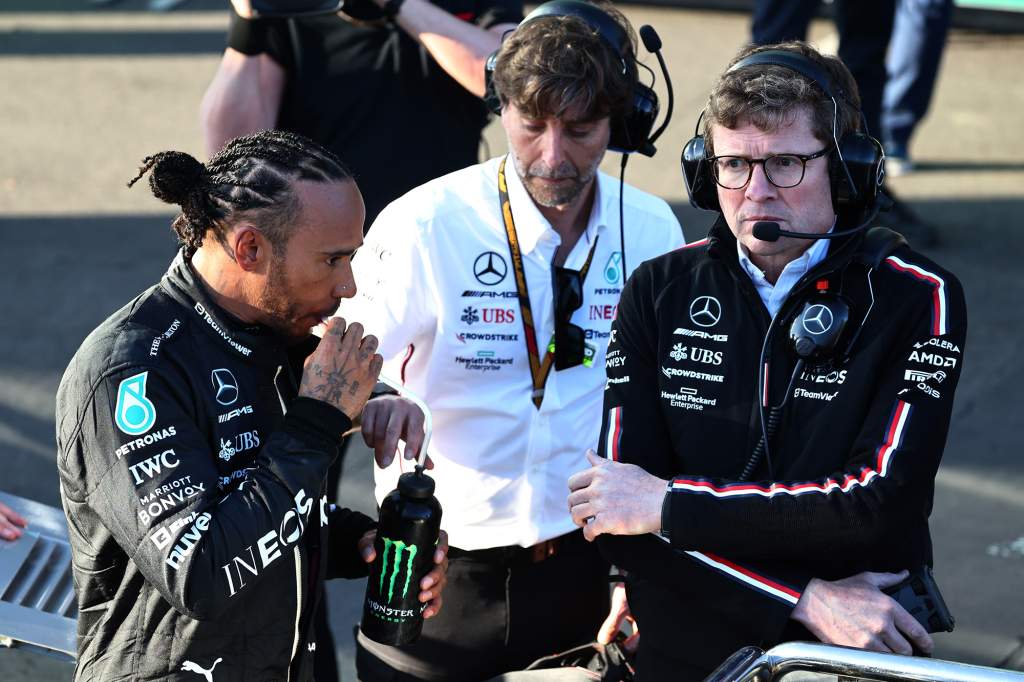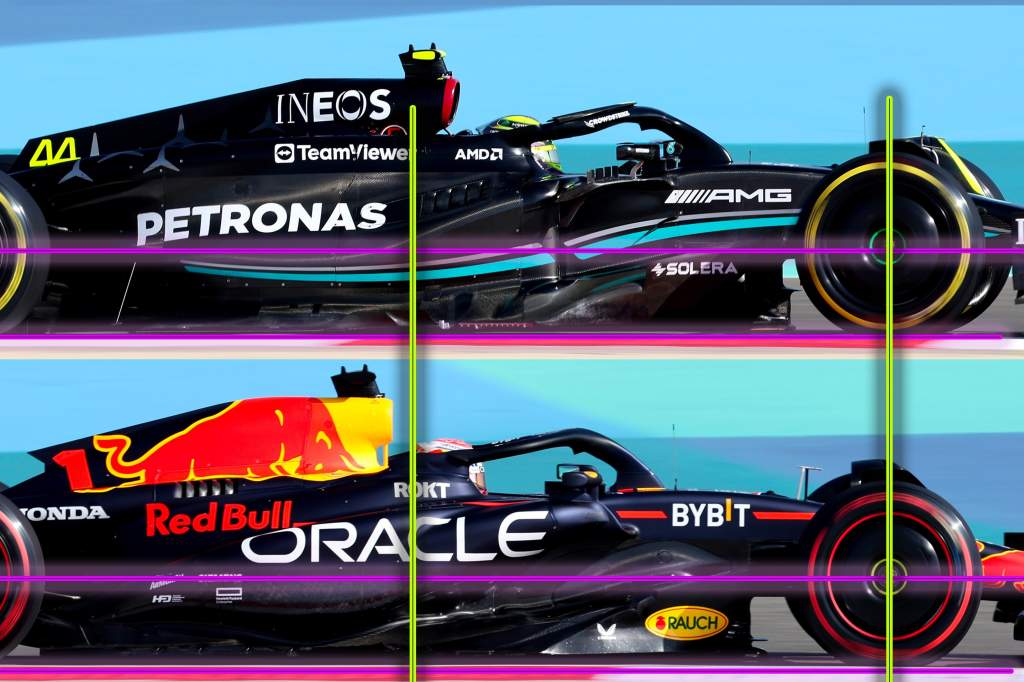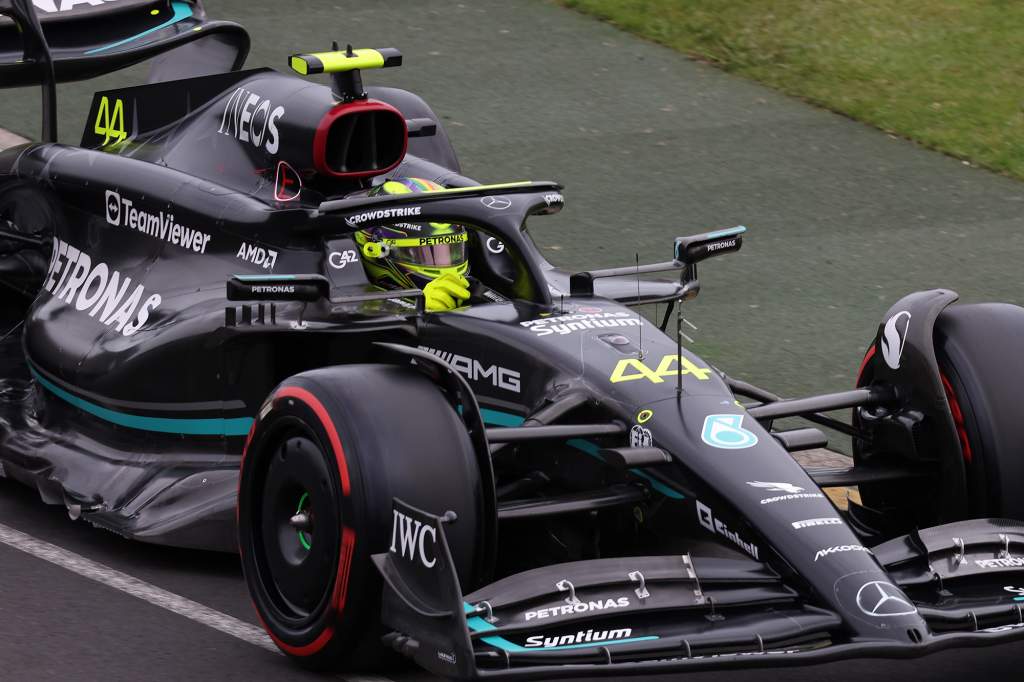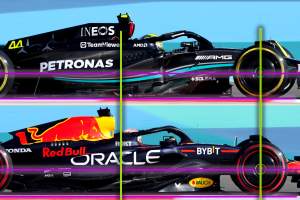Up Next

Mercedes has indicated it will revise the further-forward cockpit position of its Formula 1 car that Lewis Hamilton dislikes because it is “important to listen” to the seven-time world champion.
Seven-time world champion Hamilton recently revealed that he is struggling with the feeling he gets in the car, uncomfortable with Mercedes’ revised cockpit position in the designs it has built for the new technical rules introduced last year.
Mercedes developed the car around this key change in 2022 to enable it to go with the design of an exposed side impact structure and minimised sidepod, and kept it for 2023 against Hamilton’s wishes.
This is because the seating position was important to the design concept Mercedes had faith in, which Hamilton accepted, but the reality is the W14 is still not quick enough and now Mercedes is considering more drastic changes.
Hamilton said the cockpit position “100% has to change” and when asked by The Race if that will happen next year, Mercedes team boss Toto Wolff said: “We’re looking at the big concept and the driver position obviously is one of the things that’s most important.
“Not only in terms of the rational reasons like weight distribution or aerodynamics but also where the driver has the best feeling in the car.
“That’s something that Lewis was pretty vocal about. A seven-time world champion has an opinion and that is important to listen to.”

Though Wolff stopped short of definitively stating this will change next year, it is at least an admission that Hamilton’s preference will be taken into consideration.
And with Mercedes exploring new development directions already, it appears likely it will abandon the unique sidepod design that required this arrangement in the first place.
However, the nature of such a change means it will not happen in-season, so is something Hamilton will have to cope with in the meantime.
He hinted at this after the Australian Grand Prix, where he finished second to score his and Mercedes’ first podium finish of the season.
“I still feel uncomfortable in the car,” said Hamilton. “I still don’t feel connected to it.
“So, I’m driving as best I can with that disconnect. And I’m working as hard as I can to try and create that connection.
“But I think it’s a long project.”
Mercedes drivers do sit notably further forward than their Red Bull counterparts, the difference to other cars is more subtle.

And while the cockpit positioning will inevitably influence the driver’s feeling in the car but it is just one element feeding into a bigger picture.
If the car itself was better, the position Hamilton dislikes would be less of an issue. And there are changes planned for the short-term as well as bigger conceptual ones – with several hints already to the W14 needing mechanical improvements, not just aerodynamic upgrades.
“We are working as hard as we can in the windtunnel to find more downforce, we will be working as hard as we can in the drawing office to convert the things that the windtunnel found a few weeks ago into performance that we deliver to the track,” explained Mercedes chief technical officer James Allison.
“We will be working in the drawing office also to bring some mechanical parts to the car, some different suspension components that we think will help the underlying balance of the car and make it a more driveable thing, making it something that the drivers have more confidence to push right to the limits.”
Hamilton finished second in Melbourne and is 20 points and three positions clear of team-mate George Russell in the championship, but that situation is flattered by Russell retiring from the Australian Grand Prix.
Hamilton has been fractionally the slower Mercedes driver this year and beaten by Russell in all three qualifying sessions.
Russell does not appear to be as troubled as Hamilton in feeling the limitations of the W14 and being able to drive around them. Their respective levels of experience could be influencing this on some level.
While Hamilton has a specific issue with this generation of Mercedes preventing him from dealing with its problems as well as he usually does, he is also much more experienced and more recently used to a better-quality car giving him the feeling he desires.
Whereas Russell is adapting to the car in its current form and finds it better than anything he has driven full-time in his short F1 career, having only driven for Williams prior to joining Mercedes last year.
“The feeling of the car is not the limitation, to be honest, the car feels pretty decent,” said Russell in Melbourne.
“It’s probably the best F1 car I’ve ever driven or raced – excluding the obvious 2020 experience with Mercedes [as stand-in in Sakhir GP] – but just lacking a bit of downforce.
“We know we’ve made some huge gains over the past two, three weeks in the windtunnel and hopefully we’ll be bringing that to the track sooner than later.
“If we can deliver a performance like this with a car that is definitely quite a bit off the pace, it shows good promise for when we bring the first upgrade.”





